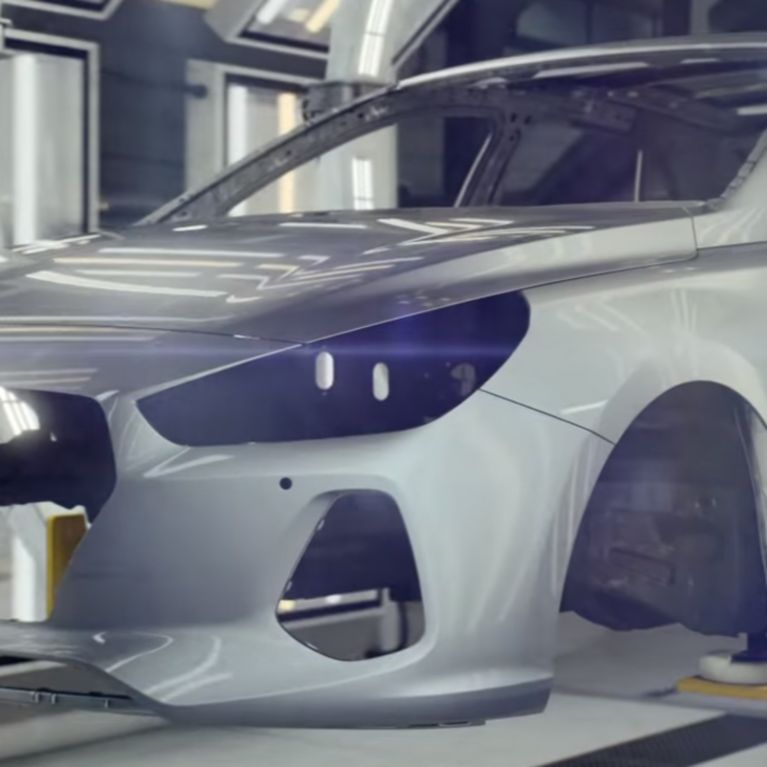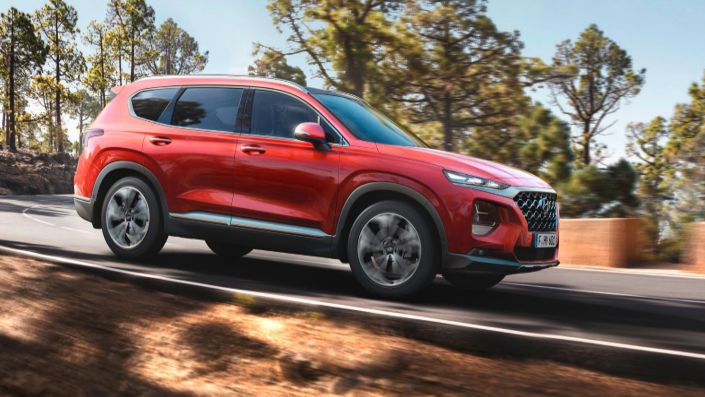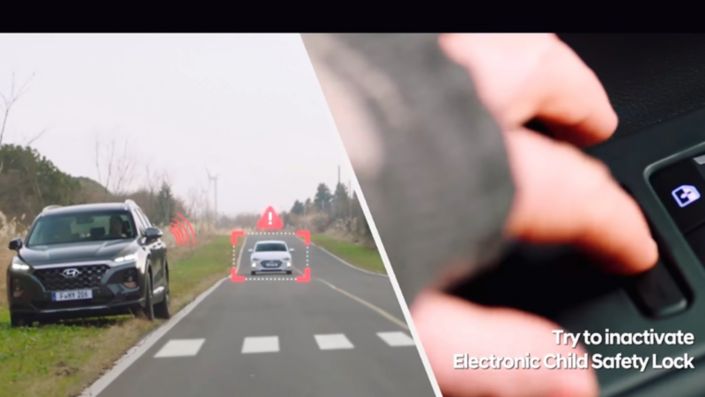It’s hard to imagine a time when cars weren’t made almost entirely of metal. Before the 20th century, however, early automobile manufacturers based their designs on the wood-based horse and carriage.
This all changed post-1900 with the arrival of new technology that allowed for the production of metal sheets that could be moulded into any shape desired, and in 1916 the world’s first all-steel bodied vehicle was produced in the USA. New ways of forging stronger and safer metal continued to emerge at a pace – so quickly, in fact, that by the end of the 1930s all-steel car bodies became the industry standard.
Of course, the steel used back then is very different to the steel found in today’s models. Over the decades, scientists and manufacturers have discovered how to alter steel’s microstructure to make it stronger and vehicles ever safer. Indeed, despite the huge advances in electronic driver aids the car industry has seen, one of the biggest improvements in safety has come from steel.
Of course, the steel used back then is very different to the steel found in today’s models. Over the decades, scientists and manufacturers have discovered how to alter steel’s microstructure to make it stronger and vehicles ever safer. Indeed, despite the huge advances in electronic driver aids the car industry has seen, one of the biggest improvements in safety has come from steel.
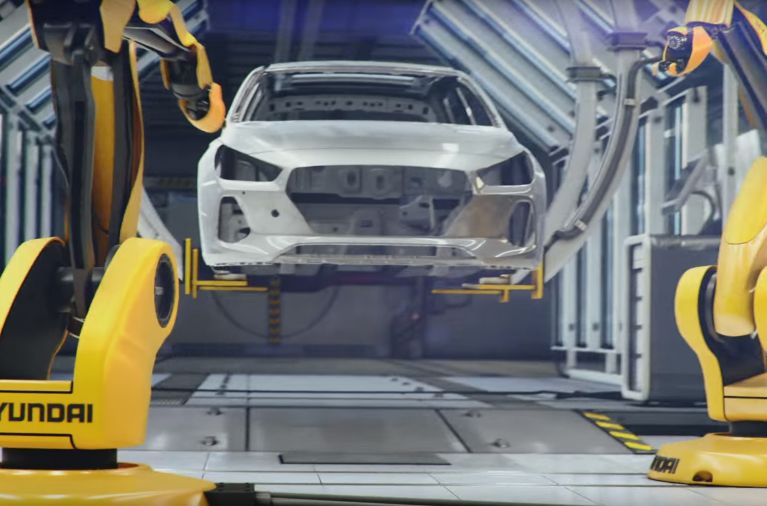
Modern high-strength steel
Since the turn of the new millennium, it has been getting even stronger. In the early 2000s, the tensile strength of the steel used in car production measured in at around 500 megapascals. Today, it’s closer to around 1,500 megapascals – the sort of strength that would allow you to hang four football team buses on an inch-wide strip without it breaking in two.
This new high-strength steel means the cars are lighter, for greater efficiency, and better able to control the transfer of energy in the event of a collision. Thanks to advances in steel production, it can disperse and redirect the force of an impact more effectively than ever.
At the front and rear of a vehicle, which have more volume with which to absorb the energy of a collision before it reaches the driver and passengers, manufacturers typically use steels that deform more easily and get stronger as they do. In a crash, these crumple until the shockwave reaches a firewall of high-strength steel that prevents further collapse and keeps the central structure around everybody inside intact.
Hyundai Motor: the only car manufacturer with its own integrated steel works
The only manufacturer with its own integrated steel works, Hyundai Motor has heavily invested to make it one of the most advanced steel production facilities in the world. The biggest benefit of this is the ability it has given the company to develop proprietary ultra-high strength steel that can give Hyundai vehicles a crucial advantage.
To guarantee quality, there is no differentiation in the standard. Hyundai uses the best steel, no matter what market the car is being sold in. To prove the point, Hyundai took two Sonatas, one built in Korea, and one in the USA and crashed them head on in a specially-built area and neither was more compromised in terms of basic safety structure.
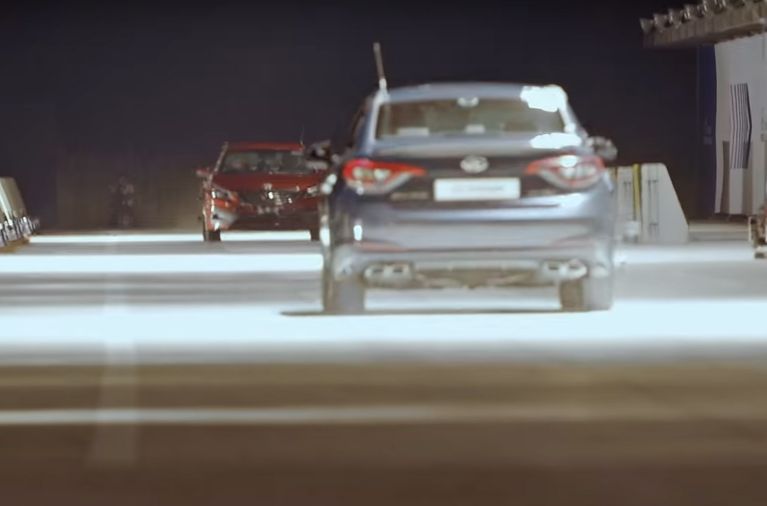
The real-world application of Hyundai's ultra-high strength steel has literally saved lives. Take, for example, an incident that occurred in the Korean city of Busan back in April 2012. Whilst crossing a bridge, a flatbed lorry carrying a four-ton shipping container tipped over sideways and fell onto a Hyundai Accent that was in the lane next to it.
Fortunately for everyone involved, the Accent supported the weight and stayed entirely intact, thanks to the ultra-high strength steel that Hyundai had created for use in its B-pillar. The steel pillar had been meticulously developed to withstand forces over five times the vehicle’s weight, whilst being 5.5kg lighter than the previous model’s pillar for increased fuel efficiency.
Fortunately for everyone involved, the Accent supported the weight and stayed entirely intact, thanks to the ultra-high strength steel that Hyundai had created for use in its B-pillar. The steel pillar had been meticulously developed to withstand forces over five times the vehicle’s weight, whilst being 5.5kg lighter than the previous model’s pillar for increased fuel efficiency.

Hyundai's use of high-strength steel in its European cars
In the European market, the stronger body shell created for the Hyundai i10, for example, uses high-strength steel and incorporates ring-shaped reinforcing loops within its B and C-pillars, and across its floor pan and roof, with additional bracing at the front between the cowl and suspension towers, to improve rigidity and safety.
The i10’s body shell is also stiffer, thanks to the use of high-tensile steel, tailored blanks, reinforcing loops and additional bracing, with torsional rigidity increased by 27 per cent over its predecessor. High-tensile steel forms over 29 per cent of its body structure – a huge increase on the nine per cent found in the original i10. These underpinnings not only improve the car’s impact-resistance, but yield significant improvements in noise, vibration and harshness as well.
The extensive use of Hyundai’s ultra-high strength steel has also benefited the handling and performance of the i20. This has increased its rigidity, ensuring the i20’s wheels are firmly planted to the road and the chassis and body work in complete harmony.
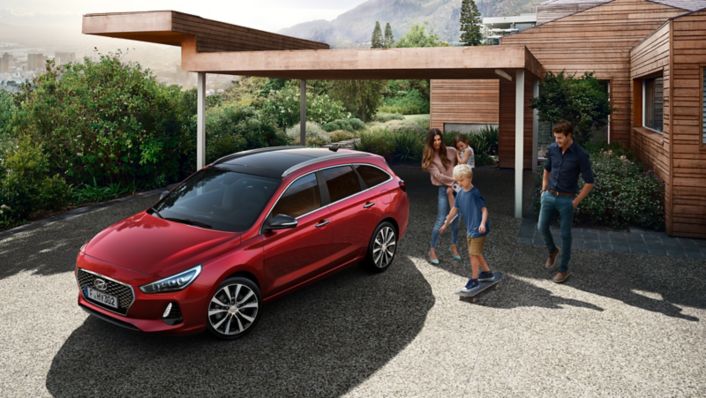
The Advanced High Strength Steel in the New Generation i30 is up to 10 per cent lighter than conventional mild steel and twice as rigid. The quantity used in each car has almost doubled to 53 per cent, simultaneously reducing the weight of the i30’s body by 28 kg yet increasing its rigidity by 22 per cent on its predecessor.
Advanced High Strength Steel, a high-tensile special steel alloy, is utilised in key areas of the i40’s body shell as well, giving it additional strength reinforcement. Needless to say, this Hyundai innovation offers even greater protection to the driver and passengers in the event of a collision.
The new body shell of the Hyundai Tucson has achieved class-leading structural rigidity thanks to the intelligent use of Advanced High Strength Steel – up 30 per cent on its predecessor – which also offers comprehensive road noise reduction, keeping the cabin quiet and peaceful. In terms of driver safety and engineering ever better products, Hyundai’s investment in steel continues to pay dividends across its range.
Advanced High Strength Steel, a high-tensile special steel alloy, is utilised in key areas of the i40’s body shell as well, giving it additional strength reinforcement. Needless to say, this Hyundai innovation offers even greater protection to the driver and passengers in the event of a collision.
The new body shell of the Hyundai Tucson has achieved class-leading structural rigidity thanks to the intelligent use of Advanced High Strength Steel – up 30 per cent on its predecessor – which also offers comprehensive road noise reduction, keeping the cabin quiet and peaceful. In terms of driver safety and engineering ever better products, Hyundai’s investment in steel continues to pay dividends across its range.
Consumption Data*
i10
Gasoline Engines
1.0 MPI (66 PS): Fuel consumption combined: 5.8 - 4.0 l/100 km; urban: 7.3 – 4.9 l/100 km;
extra-urban: 4.8 – 3.5 l/100 km; CO2 emissions combined: 134 - 93 g/km
1.25 MPI (87 PS): Fuel consumption combined: 5.9 – 4.9 l/100 km; urban: 7.4 – 6.5 l/100 km; extra-urban: 5.0 – 4.1 l/100 km; CO2 emissions combined: 139 - 114 g/km
1.0 LPG (67 PS): Fuel consumption combined: 6.5 – 5.1 l/100 km; urban: 8.3 – 6.5 l/100 km;
extra-urban: 5.4 – 4.2 l/100 km; CO2 emissions combined: 116 - 104 g/km
i20
Gasoline Engines
1.25 MPI (75 PS): Fuel consumption combined: 5.1 - 4.7 l/100 km; urban: 6.6 - 5.8 l/100 km;
extra-urban: 4.2 - 4.0 l/100 km; CO2 emissions combined: 119 - 109 g/km
1.25 MPI (84 PS): Fuel consumption combined: 5.1 - 4.7 l/100 km; urban: 6.6 - 5.8 l/100 km;
extra-urban: 4.2 - 4.0 l/100 km; CO2 emissions combined: 119 - 109 g/km
1.4 MPI (100 PS): Fuel consumption combined: 6.4 - 6.2 l/100 km; urban: 8.5 - 8.2 l/100 km;
extra-urban: 5.1 - 4.8 l/100 km; CO2 emissions combined: 148 - 143 g/km
1.0 T-GDi (100 PS): Fuel consumption combined: 4.6 - 4.0 l/100 km; urban: 5.8 - 5.0 l/100 km;
extra-urban: 3.9 - 3.4 l/100 km; CO2 emissions combined: 107 - 94 g/km
1.0 T-GDi (120 PS): Fuel consumption combined: 5.0 - 4.6 l/100 km; urban: 6.3 - 5.8 l/100 km;
extra-urban: 4.2 - 3.9 l/100 km; CO2 emissions combined: 115 - 107 g/km
Diesel Engines
1.1 CRDi (75 PS): Fuel consumption combined: 4.0 - 3.2 l/100 km; urban: 4.9 - 3.4 l/100 km;
extra-urban: 3.4 - 3.0 l/100 km; CO2 emissions combined: 103 - 83 g/km
1.4 CRDi (90 PS): Fuel consumption combined: 4.1 - 3.7 l/100 km; urban: 4.9 - 4.5 l/100 km;
extra-urban: 3.5 - 3.3 l/100 km; CO2 emissions combined: 106 - 97 g/km
i30
Gasoline Engines
1.4 MPI (100 PS): Fuel consumption combined: 5.6 - 5.4 l/100 km; urban: 6.8 - 6.6 l/100 km;
extra-urban: 4.9 - 4.8 l/100 km; CO2 emissions combined: 130 - 126 g/km
1.0 T-GDi (120 PS): Fuel consumption combined: 5.0 - 4.5 l/100 km; urban: 5.8 - 5.4 l/100 km;
extra-urban: 4.6 - 4.0 l/100 km; CO2 emissions combined: 115 - 103 g/km
1.4 T-GDi (140 PS): Fuel consumption combined: 5.5 - 4.8 l/100 km; urban: 6.6 - 5.9 l/100 km;
extra-urban: 5.0 - 4.1 l/100 km; CO2 emissions combined: 125 - 109 g/km
Diesel Engines
1.6 CRDi (95 PS): Fuel consumption combined: 3.8 - 3.6 l/100 km; urban: 4.1 – 4.0 l/100 km;
extra-urban: 3.6 - 3.5 l/100 km; CO2 emissions combined: 98 - 95 g/km
1.6 CRDi (110 PS): Fuel consumption combined: 4.1 - 3.4 l/100 km; urban: 4.4 – 3.8 l/100 km;
extra-urban: 3.9 - 3.2 l/100 km; CO2 emissions combined: 109 - 89 g/km
1.6 CRDi (136 PS): Fuel consumption combined: 4.1 - 3.8 l/100 km; urban: 4.4 - 4.2 l/100 km;
extra-urban: 3.9 - 3.6 l/100 km; CO2 emissions combined: 109 - 99 g/km
*Depending on trim and tire specifications.

